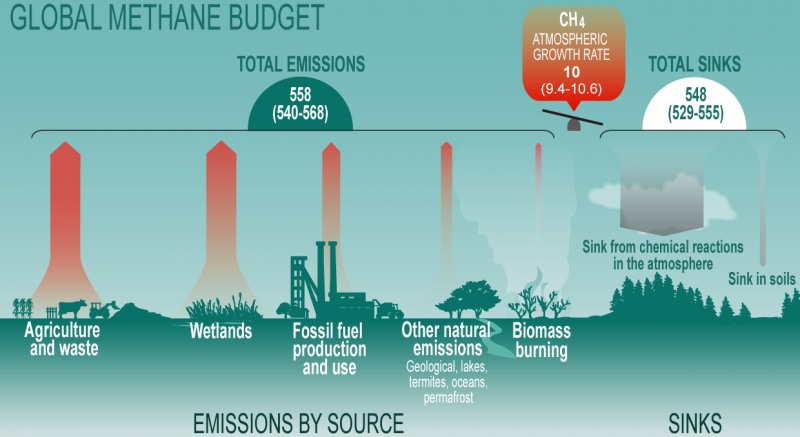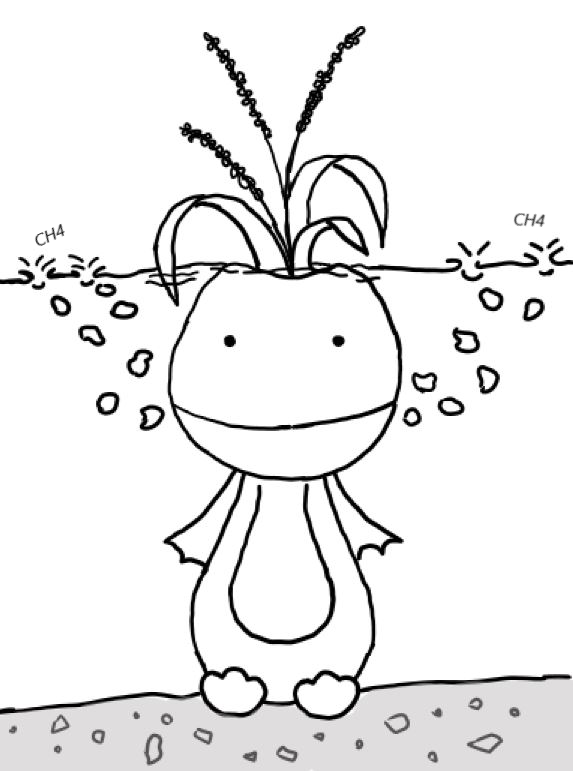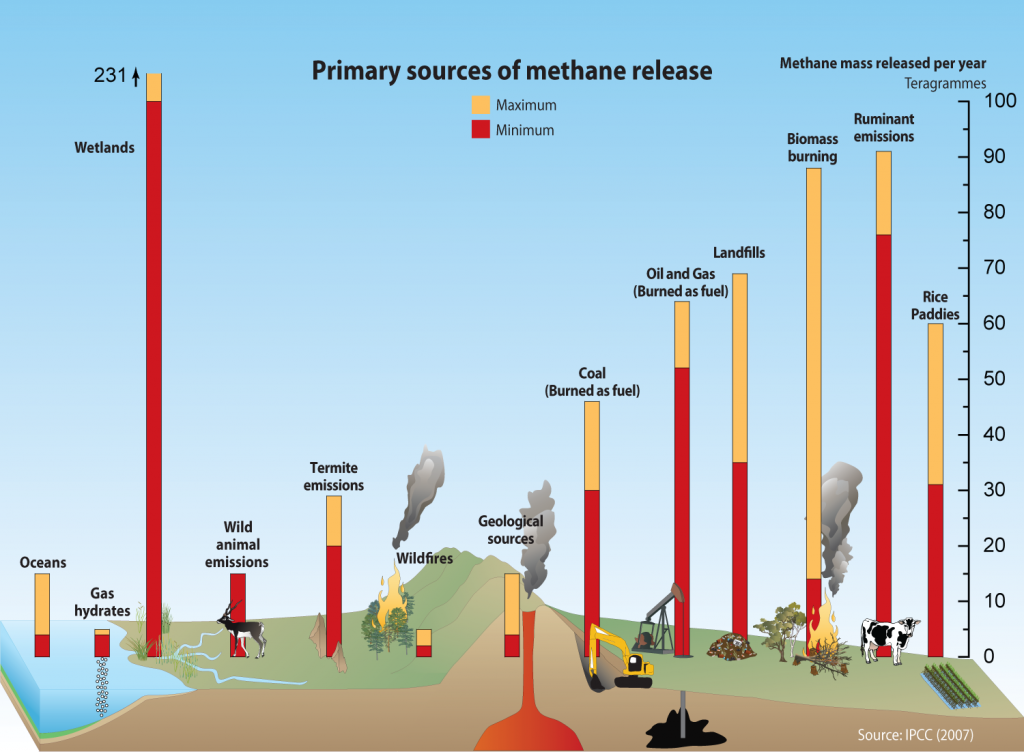Methane… T’is gas altogether

A gas that flies under the radar in mainstream media often, as CO2 is the well known greenhouse gas by everyone.
So let’s talk about my ‘favourite‘ greenhouse gas, methane!
It is one of the big hitter greenhouse gases with a global warming potential (GWP) 25 times greater than that of CO2; while it can also linger in the atmosphere for up to 12 years.
In Ireland methane is relatively well known as it is emitted by cows; seriously at a family wedding last year my cousin instantly asked if I was studying ‘cow farts’ when I mentioned the gas once (I mean he wasn’t entirely wrong but I was studying landfills not cows!).
The human health dangers are also well known among the farming community. Methane is part of the lethal concoction of gases released when slurry is agitated in preparation for use as fertilizer. The gases released can cause concussion and death almost instantly. The rotten egg smell from hydrogen sulfide that usually accompanies it on landfills was my only way of telling it was in the air (methane itself is odorless). So yea, methane is pretty nasty stuff.
Now lets get on to all the other sources; some well known, some more obscure. According to Heilig (1994), there are six core sources which emit methane due to anaerobic decomposition (AKA there is no oxygen present).
- Natural wetlands;
- Paddy rice fields;
- Livestock emissions in the form of intrinsic fermentation (as my cousin so eloquently puts it ‘cows farts’ – I’ll add it’s actually burps) and animal waste;
- Biomass burning (forest fires, charcoal combustion, and firewood burning);
- Anaerobic decomposition of organic waste in landfills;
- Fossil methane emission during the exploration and transport of fossil fuels (Heilig, 1994).
While that does give a good overall picture that study was released when I was 2 years old so see below more recent tellings of the major methane sources. Areas of permafrost in Northern latitudes are also becoming increasingly concerning for methane emissions as they are melting due to global warming; there is a serious danger of reaching a tipping point wherein we will lose all control of emissions.

Source: https://earthsky.org/earth/global-methane-levels-hitting-new-highs
This is my second project in my science career based on this very potent gas. Last year I studied methane emissions from landfilling municipal solid waste for my undergraduate thesis. This year I am studying the emissions of methane in relation to rice crops. Who knows next year I might be sitting on a frozen lake with a lighter and an ice-pick; looks like great craic!


But lets not get ahead of ourselves! We’ve spoken about methane in general, now lets talk about rice.
As we’ve previously seen with our little friend here, rice is traditionally grown submerged in water. Due to the anoxic soil conditions associated with flooded rice, paddy fields ideal conditions for methane-producing bacteria which cause methanogenisis. Rice production globally accounts for 10-11% of total methane emissions which you can clearly see in this fine graphic below (Adhya et al., 2014; Maraseni et al., 2018).
So for now that is the gist of what I would like to tell you all about methane!


